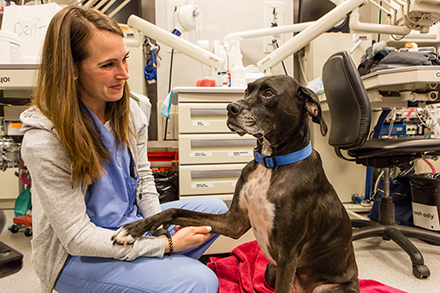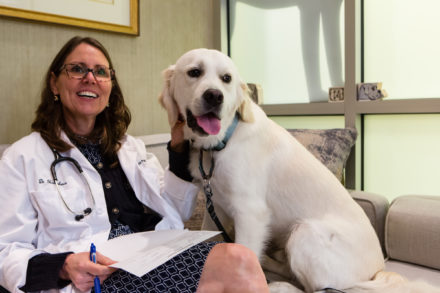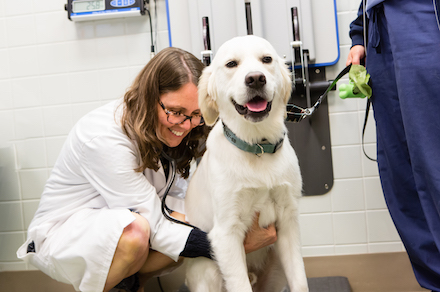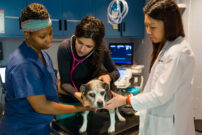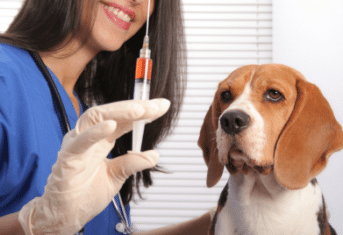How to Plan a Road Trip with Your Pet: A Veterinarian’s Safety Tips
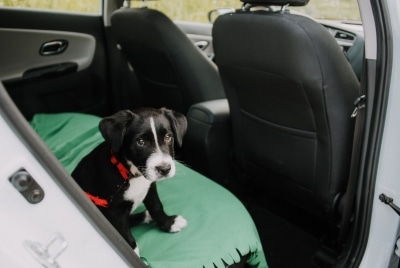
How to Plan a Road Trip with Your Pet: A Veterinarian’s Safety Tips
Since the holidays are nearly over, many of you might be thinking about a winter getaway to some place with better weather than where you celebrated the holidays. If that getaway includes a road trip with your favorite furperson riding shotgun, today’s blogpost is an essential read to ensure the safety of both you and your pet.
Car Safety for Pets
In the introduction, I mentioned your favorite furperson riding shotgun on a road trip. I didn’t mean that literally. The passenger seat is not a safe place for your pet. Your lap is an even worse place for your pet to travel. Unrestrained, pets contribute to distracted driving. In an accident, an unrestrained pet becomes a projectile – dangerous to themselves and anyone riding in the car. The safest place in the car is a crate that has been tethered to the child seat loops or behind the screen dividing the cargo area from the passenger area. The Center for Pet Safety studies and certifies automobile safety products for pets using canine and feline crash test dummies. Their website is a great resource to review while planning your trip.
Planning for Veterinary Care While on the Road
The obvious point here is to be sure you have enough of your pet’s medications to last for the duration of the trip. One of my clients has a clever solution to this potential problem. The chain drugstore in New York City where I prescribe her pet’s medications will refill those prescriptions at their North Carolina branch where she and her dog vacation. This makes her trip much simpler as refills are readily accessible while she is out of town.
Less obvious is planning for the different diseases and dangers your pet could encounter in a different part of the world. There is variation in the distribution of fleas, ticks and heartworms across the United States, and the Companion Animal Parasite Council recommends year-round flea, tick and heartworm preventative for all dogs and cats, regardless of where they call home. However, this recommendation is especially important if you are heading to areas of high risk for these diseases, such as the southeastern states. Other local concerns include the deadly bufo or cane toads in Florida—one lick of a bufo toad can be fatal. Out west, there are poisonous snakes your pets need to avoid. Before you travel to a new location, investigate potential pet hazards and how to keep your pet safe.
Finding an Animal ER in an Emergency
Should your pet have an emergency while you are traveling, the easiest way to find an animal ER is a quick internet search on your phone. If you don’t get any viable hits, try calling the nearest veterinary hospital and listen to their answering machine. Their message will likely give a recommendation for the nearest animal ER.
Visiting Canada with Your Pet? Have Your Rabies Papers Ready
To enter Canada with your pet, you need a rabies certificate provided by your veterinarian. To reentry the United States, the Centers for Disease Control (CDC) also requires rabies vaccination papers. Before you leave home, you need to fill out an online form about your dog’s rabies vaccination.
Traveling to Mexico with Your Pet
Pets traveling to Mexico for sun and relaxation do not need any health papers to enter the country, according to the United States Department of Agriculture’s (USDA) Pet Travel Website as of December 12, 2024. However, coming back into the United States is more complicated. Since Mexico is considered a screwworm affected country, a health certificate completed by a veterinarian in Mexico documenting freedom from screwworm is required for dogs reentering the USA, in addition to rabies information required by the CDC.
The Centers for Disease Control have an FAQ page about bringing a dog into the United States from abroad. Currently, there appears not to be any requirements for cats entering the USA from Mexico or Canada. However, a word of warning: the pet import and export regulations can change unexpectedly. Monitor the websites of the USDA and CDC regularly before you travel to stay up to date with travel requirements.
Planning to travel internationally with your dog or cat? Here are some previous blogposts with additional planning suggestions for your pet:



